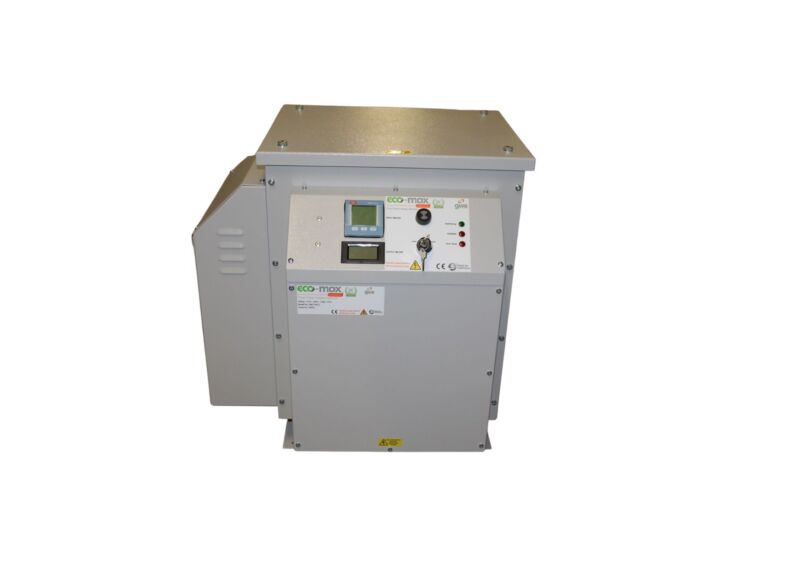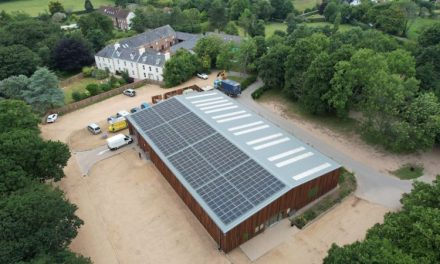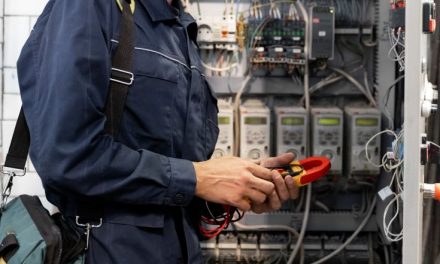Manufacturers may be pouring money down the drain because they are being supplied with more electricity than their equipment needs to function effectively, says Mark Yates, of air and fluid power specialist Thorite . He explains how voltage optimisers can rein in energy costs, extend asset life and improve plant efficiency.
Soaring energy prices are set to put even more pressure on companies already battling to maintain a strong bottom line.
The pressure is on to find new ways to reduce energy bills without impacting productivity. Butmany businesses do not realise that they may actually be paying for a higher energy supply than their plant equipment needs to operate efficiently. In fact, not only might they be paying over the odds for their energy bills, but their equipment might be being damaged by the over-supply of voltage, adding higher maintenance costs to their outgoings.
This potential over-supply of energy from the national grid dates back to the early 1990s, when the voltage of UK factory equipment was harmonised with the rest of Europe, from a standard 240v to 230v +/- 10%.
As a result, all equipment is now designed to operate at the lower voltage levels, around 207v. However, the national grid was not adapted to meet this lower demand and has continued to supply energy at levels that can potentially reach the upper level of 253v.
This means that equipment can be consuming energy at a far higher voltage than it actually needs to function.
The budgetary impact of this is obvious – higher energy consumption means bigger energy bills.But the implications of over-supply extend beyond that. If an asset which only requires 207v is being fed above that amount, the additional current increases both its running temperature andvibration levels. This can lead to issues such as premature bearings failure and reduced asset lifespan, as well as risking unscheduled downtime and increased maintenance costs.
The UK Institute of Electrical Engineers (IEE) wiring regulations state that the lifespan of a light operating at an excessive 240v, instead of the 230v it requires, will be reduced by 46%. Apply that principle to plant equipment such as heaters and motors, and it is easy to see how the costsof over-supply can mount up.
Voltage optimisers (VOs) provide a sustainable solution to this excess energy use.
How a VO works
The principle of a VO could not be simpler – it regulates the voltage feed going into yourpremises and ensures a machine only uses the amount of KWHs it was designed to consume.
Halting over-supply keeps energy consumption at the optimal level a machine needs to function– reining in consumption, reducing your carbon footprint and driving down energy bills. Assets are also protected from potentially damaging overheating and excess vibration, extending their lifespan and helping limit maintenance costs to the purely routine.
It should be stressed that the inductive nature of any loads has no bearing on the effectiveness of VOs to bring about savings, and they also work effectively alongside power factory correction.
Identifying savings
The first step to take to establish how your plant can benefit from a voltage optimiser is to have an energy survey conducted by a qualified provider.
They will measure the amount of voltage going into your factory and calculate whether it will be viable to reduce the level of input, taking into account factors such as voltage drop. Put simply, the closer you are to an electricity substation, the higher the supply is likely to be; the further away, the longer the supply cable, and the more the voltage will progressively reduce over distance.
A voltage optimiser such as GWE’s Eco-Max can optimise the voltage to a single piece of equipment, localised area or an entire building, with fixed or variable outputs and optional power factor correction.
Projected energy savings can be accurately calculated on the reduction in KWHs consumed.Maintenance and repair savings are more subjective and therefore less easy to gauge, however,Ofgem states that a 10% reduction in maintenance costs is a reasonable expectation when voltage is optimised.
Case study – Food producer, Manchester
A multinational food manufacturer wanted to improve its environmental performance, specifically looking at reducing energy use, greenhouse gas emissions, water use and waste sent to landfill sites.
Part of this process involved surveying its facility in Manchester, with a view to identifying actions to reduce energy consumption. It became clear that voltage optimisation would be beneficial in reducing the facility’s energy consumption and offer considerable cost savings too.
GWE, Sheffield, was the only company that could supply a single optimiser solution.
Data logging allowed GWE to measure consumption and provide baseline figures. During this process it became clear that the site suffered from large loading swings which made it unsuitable for standard forms of fixed voltage optimisation.
The solution involved the design and installation of a single staged voltage tracking (stabilised) Eco-Max Power optimiser with a custom cable termination compartment, to deal with the specific issues identified and achieve the maximum possible energy saving. The unit was installed and further data logging carried out to measure the savings. These amounted to:
The hike in energy prices alongside other economic factors means manufacturers and producers face an unprecedented financial squeeze. Every opportunity to minimise unnecessary expenditure must be seized.
Voltage optimisers offer a very real opportunity to calculate projected savings with swift return on investment and long- term financial, operational and environmental benefits. There has never been a more apposite time to investigate they savings they might bring.






